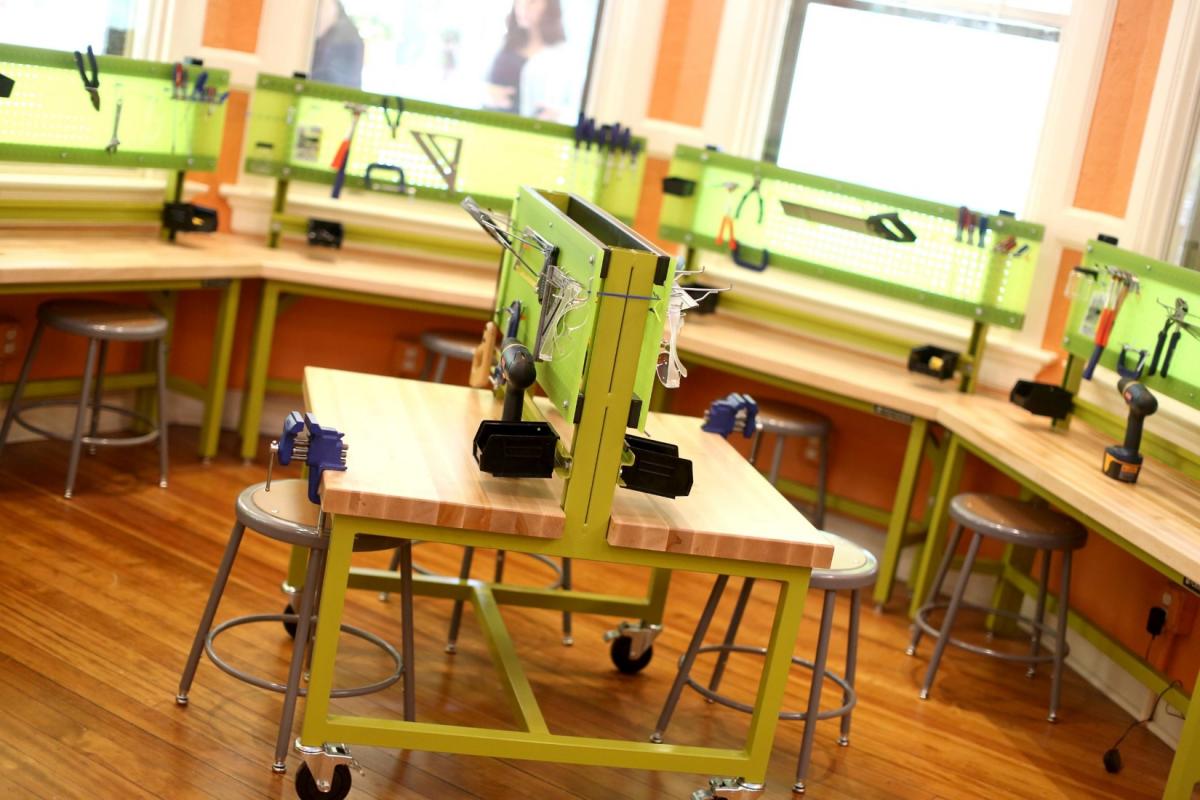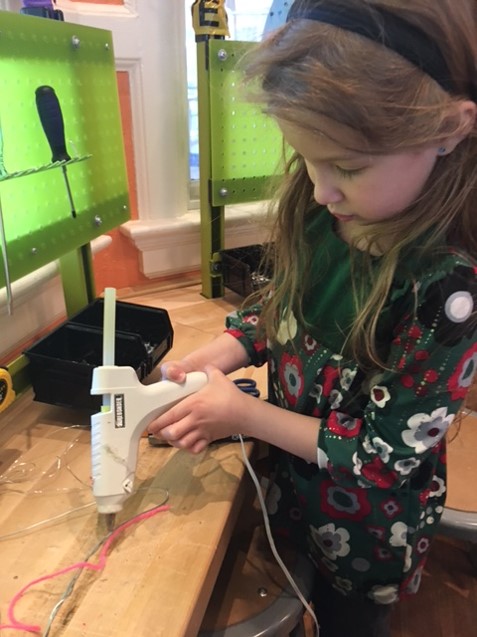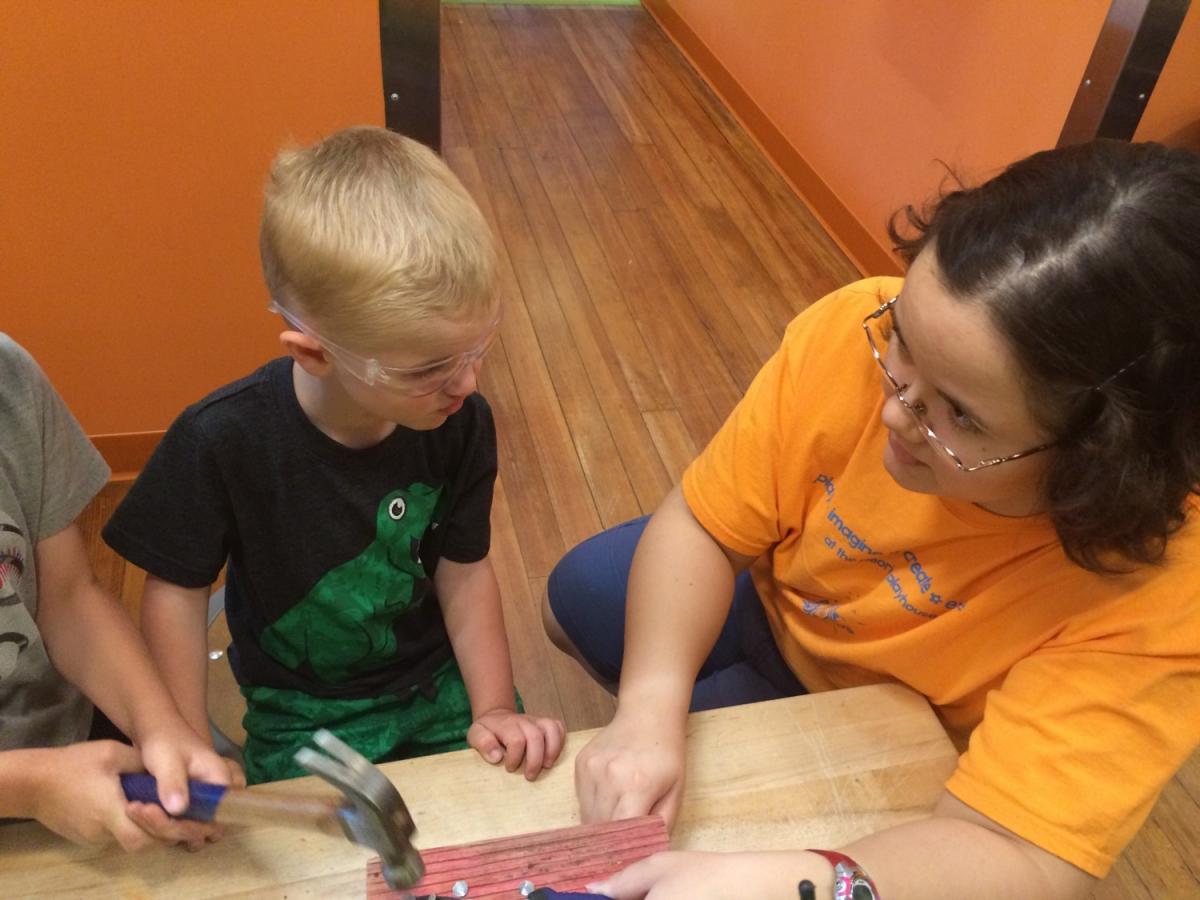Blog Posts | June 21, 2016
Share ThisEditor's Note: This is the third post in a series during this National Week of Making to highlight Making in museums and libraries.
By Rebecca Shulman Herz
Director, Peoria PlayHouse Children’s Museum
The Peoria PlayHouse Children’s Museum, which opened in June 2015, features “Real Tools,” a makerspace area stocked with wood and carpentry tools, as well as recyclables, tape, fabric, and other non-carpentry materials. Over the past year, the museum has watched how visitors use the space, and wondered – how can a space like this best achieve our goal of helping visitors become explorers and creators of the world?

(All photos courtesy of Peoria PlayHouse Children's Museum. Pictured: The Real Tools makerspace area.)
Recently, education staff spent a day reflecting on programs, articulating the museum’s educational philosophy, and proposing program improvements. One of the questions we grappled with is, what are “makerspace” goals, and how do they align with the museum’s overall educational goals?
Makerspaces are tool-focused: “community centers with tools” that “enable community members to design, prototype and create manufactured works that wouldn’t be possible to create with the resources available to individuals working alone.” (http://spaces.makerspace.com/) In a children’s museum, visitors are often encountering tools – glue guns, hammers, drills – for the first time. When people learn to use tools, they often start by creating proscribed projects. For example, you might learn to use a sewing machine by making a pillow.

(Pictured: A visitor uses a glue gun to make a tiara.)

(Pictured: A staff facilitator helps young visitors learn to use a hammer.)
But “open-ended learning” is a core value of many museums, and this is certainly true of the PlayHouse.
We want to encourage innovation, and we offer activities and programs in which visitors are invited to make choices, and ideally to surprise us. Proscribed projects are the antithesis of open-ended learning.
Is it possible to do both – teach visitors to use tools, and encourage innovation – in the space of a single visit?
In order to address the dual challenge of being true to the maker-movement goal of offering tools and teaching people to use them, while also embracing the museum value of open-ended innovation, we are spending the summer tweaking our maker space area, including:
-
We are thinking broadly about tools, and adding to the number of tools we offer visitors. Along with hammers, saws, and drills, we will have staple guns, tinsnips, coping saws, and cardboard cutters.
-
We are scripting what we want staff to say to visitors when they enter the maker space area, so that visitors are explicitly asked to identify tools and materials that interest them, and then make something novel using those tools and materials.
-
We are creating handouts for visitors to use and take home. On one side, it will have pictures of each of the tools available; visitors can circle the tools they used that day. On the back, it will have ideas for extending the experience at home.
I would love to hear more ideas - how does your museum address this challenge?
Rebecca Shulman Herz is the Director of the Peoria PlayHouse Children’s Museum in Peoria, Illinois, and blogs at www.museumquestions.com.
